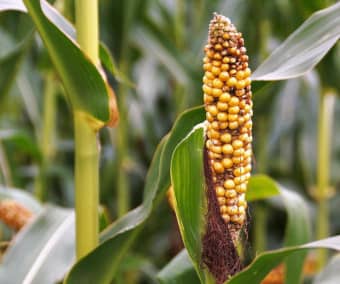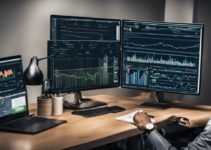Table of Contents
Introduction
In writing your thesis, one of the first terms that you encounter is the word variable. Failure to understand the meaning and the usefulness of variables in your study will prevent you from doing excellent research. What are variables, and how do you use variables in your research?
I explain this key research concept below with lots of examples of variables commonly used in a study.
You may find it challenging to understand just what variables are in research, especially those that deal with quantitative data analysis. This initial difficulty about variables becomes much more confusing when you encounter the phrases “dependent variable” and “independent variable” as you go deeper in studying this vital concept of research, as well as statistics.
Understanding what variables mean is crucial in writing your thesis proposal because you will need these in constructing your conceptual framework and in analyzing the data that you have gathered.
Therefore, it is a must that you should be able to grasp thoroughly the meaning of variables and ways on how to measure them. Yes, the variables should be measurable so that you will use your data for statistical analysis.
I will strengthen your understanding by providing examples of phenomena and their corresponding variables below.
Definition of Variable
Variables are those simplified portions of the complex phenomena that you intend to study. The word variable is derived from the root word “vary,” meaning, changing in amount, volume, number, form, nature, or type. These variables should be measurable, i.e., they can be counted or subjected to a scale.
The next section provides examples of variables related to climate change, academic performance, crime, fish kill, crop growth, and how content goes viral. Note that the variables in these phenomena can be measured, except the last one, where a bit more work is required.
Examples of Variables in Research: 6 Phenomena
The following are examples of phenomena from a global to a local perspective. The corresponding list of variables is given to illustrate how complex phenomena can be broken down into manageable pieces for better understanding and to subject the phenomena to research.
Phenomenon 1: Climate change
Examples of variables related to climate change:
- sea level
- temperature
- the amount of carbon emission
- the amount of rainfall
Phenomenon 2: Crime and violence in the streets
Examples of variables related to crime and violence:
- number of robberies
- number of attempted murders
- number of prisoners
- number of crime victims
- number of laws enforcers
- number of convictions
- number of carnapping incidents
Phenomenon 3: Poor performance of students in college entrance exams
Examples of variables related to poor academic performance:
- entrance exam score
- number of hours devoted to studying
- student-teacher ratio
- number of students in the class
- educational attainment of teachers
- teaching style
- the distance of school from home
- number of hours devoted by parents in providing tutorial support
Phenomenon 4: Fish kill
Examples of variables related to fish kill:
- dissolved oxygen
- water salinity
- temperature
- age of fish
- presence or absence of parasites
- presence or absence of heavy metal
- stocking density
Phenomenon 5: Poor crop growth
Examples of variables related to poor crop growth:
- the amount of nitrogen in the soil
- the amount of phosphorous in the soil
- the amount of potassium in the ground
- the amount of rainfall
- frequency of weeding
- type of soil
- temperature

Phenomenon 6: How Content Goes Viral
- positive,
- interesting,
- prominent,
- useful,
- surprising, and
- causing physiological arousal.
Notice in the above variable examples that all the factors listed under the phenomena can be counted or measured using an ordinal, ratio, or interval scale, except for the last one. The factors that influence how content goes viral are essentially subjective.
But researchers devised ways to measure those variables by grouping the respondents’ answers on whether content is positive, interesting, prominent, among others (see the full description here).
Thus, the variables in the last phenomenon represent the nominal scale of measuring variables.
The expected values derived from these variables will be in terms of numbers, amount, category, or type. Quantified variables allow statistical analysis. Variable descriptions, correlations, or differences are then determined.
Difference Between Independent and Dependent Variables
Which of the above examples of variables are the independent and the dependent variables?
Independent Variables
The independent variables are those variables that may influence or affect the other variable, i.e., the dependent variable.
For example, in the second phenomenon, i.e., crime and violence in the streets, the independent variables are the number of law enforcers. If there are more law enforcers, it is expected that it will reduce the following:
- number of robberies,
- number of attempted murders,
- number of prisoners,
- number of crime victims, and
- the number of carnapping incidents.
The five variables listed under crime and violence in the streets as the theme of a study are all dependent variables.
Dependent Variables
The dependent variable, as previously mentioned, is the variable affected or influenced by the independent variable.
For example, in the first phenomenon on climate change, temperature as the independent variable influences sea level rise, the dependent variable. Increased temperature will cause the expansion of water in the sea. Thus, sea-level rise on a global scale will occur.
I will leave the classification of the other variables to you. Find out whether those are independent or dependent variables. Note, however, that some variables can be both independent or dependent variables, as the context of the study dictates.
Finding the relationship between variables
How will you know that one variable may cause the other to behave in a certain way?
Finding the relationship between variables requires a thorough literature review. Through a review of the relevant and reliable literature, you will find out which variables influence the other variable. You do not just guess relationships between variables. The entire process is the essence of research.
At this point, I believe that the concept of the variable is now clear to you. Share this information with your peers, who may have difficulty in understanding what the variables are in research.



Your question is unclear to me Biyaminu. What do you mean? If you want to cite this, see the citation box after the article.
Dear Calvin, when you state your research objectives that’s where you will know if you need to use variables or not.
Great work. I’d just like to know in which situations are variables not used in scientific research please. thank you.
I salute your work, before I was have no enough knowledge about variable I think I was claimed from my lecturers, but the real meaning I was in the mid night. thanks
Thank you very much for your nice NOTE!
I have a question: Can you please give me any examples of variables in students’ indiscipline?
A well articulated exposition! Pls, I need a simple guide on the variables of the following topic : IMPACT OF TAX REFORMS ON REVENUE GENERATION IN NIGERIA: A CASE STUDY OF KOGI STATE. THANKS A LOT.
thanks for the explanation a bout variables. keep on posting information a bout reseach on my email.
This was extremely helpful and easy to digest
Dear Hamse,
That depends on what variables you are studying. Are you doing a study on cause and effect?
Dear Sophia and Hamse,
As I mentioned earlier, please read the last part of the above article on how to determine the dependent and independent variables.
CHALLENGES FACING DEVELOPMENT OF COOPERATIVE MOVEMENT IN TANA RIVER COUNTY
What is the IV and DV of this Research topic?
Dear Daur,
You can see in the last part of the above article an explanation about dependent and independent variables.
Dear Maur, what you just want to do is to describe the challenges. No need for a conceptual framework.
Hey, I really appreciate your explanation however I’m having a hard time figuring out the IV and DV on the topic about fish kill, can you help me?
I am requested to write 50 variables in my research as per my topic which is about street vending. I am really clueless.
Hi Regoniel…your articles are much more guiding….pls am writing my thesis on impact of insurgency on Baga Road fish market Maiduguri.
How will my conceptual framework looks like
What do I need to talk on
Dear Alhaji, just be clear about what you want to do. Your research question must be clearly stated before you build your conceptual framework.
Thanks so much !
This article is so much simple to my understanding. A friend of my referred me to this site and I am so greatful.
Please Sir, when writing the dependent and independent variables should it be in a table form ?
Dear Grace,
Good day. I don’t understand what you mean. But if your school requires that the independent and dependent variables be written in table form, I see no problem with that. It’s just a way for you to clearly show what variables you are analyzing. And you need to justify that.
Can you please give me what are the possible variables in terms of installation of street lights along barangay roads of calauan, laguna: an assessment?
Hello sir, sorry to bother you but what are the guidelines for writing a good report
Guidelines for writing a good research report?